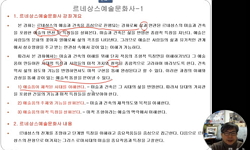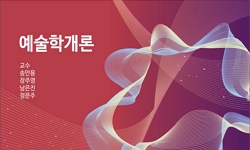본 논문은 니체와 푸코의 예술론을 삶을 위한 기예(techne tou biou, art de vivre)라는 공통적 내용을 위주로 하여 비교한다. 니체는 예술을 예술가의 활동과 그 결과에 한정하지 않는다. 예술은 실...
http://chineseinput.net/에서 pinyin(병음)방식으로 중국어를 변환할 수 있습니다.
변환된 중국어를 복사하여 사용하시면 됩니다.
- 中文 을 입력하시려면 zhongwen을 입력하시고 space를누르시면됩니다.
- 北京 을 입력하시려면 beijing을 입력하시고 space를 누르시면 됩니다.
https://www.riss.kr/link?id=A107821486
- 저자
- 발행기관
- 학술지명
- 권호사항
-
발행연도
2021
-
작성언어
-
- 주제어
-
등재정보
KCI등재
-
자료형태
학술저널
- 발행기관 URL
-
수록면
1-35(35쪽)
- DOI식별코드
- 제공처
-
0
상세조회 -
0
다운로드
부가정보
국문 초록 (Abstract)
본 논문은 푸코의 실존의 미학이 니체의 예술론을 직접적으로 계승하면서 니체의 삶의 예술론이 갖는 한계를 극복한다고 주장한다. 푸코의 실존의 미학은 예술을 윤리적이면서도 미학적인 실천으로 정의하고 그러한 실천이 주체 형성의 방식임을 제시한다는 점에서 니체의 삶의 예술론과 유사하다. 그러나 니체의 삶의 예술론이 주권적 개인의 실천이라는 틀을 넘지 못하는 반면 푸코의 실존의 미학은 사회적인 맥락 속에서만 실천될 수 있다는 점에서 푸코는 니체를 넘어선다.
본 논문은 니체와 푸코의 예술론을 삶을 위한 기예(techne tou biou, art de vivre)라는 공통적 내용을 위주로 하여 비교한다. 니체는 예술을 예술가의 활동과 그 결과에 한정하지 않는다. 예술은 실존 자체와 연관된다. 즉 예술은 매 순간 극대화하는 힘을 세상에 투사하는 활동 자체이며, 영원한 극복과 창조라는 놀이를 하는 주체의 활동으로서 제시된다. 자기를 형성하고 극복하는 존재인 한 인간은 모두 예술가이며 삶은 자신의 예술작품이다. 니체는 매일의 연습과 실천으로 자신을 도덕적인 주체로 만들어 가는 것이 곧 예술임을 제시한다. 한편 후기의 푸코는 주체가 자신을 형성하는 주체화의 양식을 탐구하면서 실존의 미학(esthetique de l’existence)을 제시한다. 실존의 미학은 자기를 하나의 예술작품처럼 여겨서 창조하는 것을 의미한다. 실존의 미학의 핵심적인 부분은 고대의 좋은 삶을 위한 기예에서 발견되는데 자기의 진실에 접근하는 것이 곧 자기를 변형하는 것이라는 점에서 그러하다. 실존의 미학은 탈예속화 및 자기 통치와 같은 맥락에서 제시된다.
본 논문은 푸코의 실존의 미학이 니체의 예술론을 직접적으로 계승하면서 니체의 삶의 예술론이 갖는 한계를 극복한다고 주장한다. 푸코의 실존의 미학은 예술을 윤리적이면서도 미학적인 실천으로 정의하고 그러한 실천이 주체 형성의 방식임을 제시한다는 점에서 니체의 삶의 예술론과 유사하다. 그러나 니체의 삶의 예술론이 주권적 개인의 실천이라는 틀을 넘지 못하는 반면 푸코의 실존의 미학은 사회적인 맥락 속에서만 실천될 수 있다는 점에서 푸코는 니체를 넘어선다.
다국어 초록 (Multilingual Abstract)
In his late work, Foucault proposed a new formation of the subject. He called it ‘aesthetics of the existence (esthétique de l'existence)’. It signifies that one should consider oneself as an artwork and create oneself. A main idea of the aesthetics of existence is found in the ancient ‘arts of the life’, in which it is assumed that an approach towards the truth of the self is equivalent to the transformation of the self. ‘Aesthetics of existence’ was proposed in the context of subjectivation and government of the self.
In this article, I show that Foucault's ‘aesthetics of existence’ not only succeeds Nietzsche's art theory, but also overcomes its limitations. Foucault's ‘aesthetics of existence’ has similitude of Nietzsche's art theory, in which art is defined as an ethical and esthetical practice to transform the subject. While Nietzsche's ‘art theory of life’ does not go beyond the framework of the sovereign individual's practice, Foucault exceeds Nietzsche by asserting that an individual practice can only function within a social context.
In this article, I compare Nietzsche's theory of art, which is based on ‘arts of the life (techné tou biou)’, with Foucault's theory of art. Instead Nietzsche defined art only as an artist's activities or artworks, he suggested that art is relate...
In this article, I compare Nietzsche's theory of art, which is based on ‘arts of the life (techné tou biou)’, with Foucault's theory of art. Instead Nietzsche defined art only as an artist's activities or artworks, he suggested that art is related to existence itself; art is the projection of maximizing power at every moment into the world; art is playing of subject which eternally overcome and create. As long as a human being forms himeself, he is an artist and his life is his artwork. Nietzsche suggested that art transforms a self into an ethical self through daily practice and exercise.
In his late work, Foucault proposed a new formation of the subject. He called it ‘aesthetics of the existence (esthétique de l'existence)’. It signifies that one should consider oneself as an artwork and create oneself. A main idea of the aesthetics of existence is found in the ancient ‘arts of the life’, in which it is assumed that an approach towards the truth of the self is equivalent to the transformation of the self. ‘Aesthetics of existence’ was proposed in the context of subjectivation and government of the self.
In this article, I show that Foucault's ‘aesthetics of existence’ not only succeeds Nietzsche's art theory, but also overcomes its limitations. Foucault's ‘aesthetics of existence’ has similitude of Nietzsche's art theory, in which art is defined as an ethical and esthetical practice to transform the subject. While Nietzsche's ‘art theory of life’ does not go beyond the framework of the sovereign individual's practice, Foucault exceeds Nietzsche by asserting that an individual practice can only function within a social context.
동일학술지(권/호) 다른 논문
-
세대론에서의 세대 형성 요인과 상호세대론적 세대 개념의 물음
- 한국하이데거학회
- 박성준 ( Sung-jun Park )
- 2021
- KCI등재
-
- 한국하이데거학회
- 신응철 ( Eung-chol Shin )
- 2021
- KCI등재
-
위대함의 전조 vs. 깊은 권태 : 벤야민과 하이데거의 권태 개념 비교 연구
- 한국하이데거학회
- 김동훈 ( Dong-hun Kim )
- 2021
- KCI등재
-
- 한국하이데거학회
- 이윤미 ( Yoon-mi Lee )
- 2021
- KCI등재





 KCI
KCI KISS
KISS






